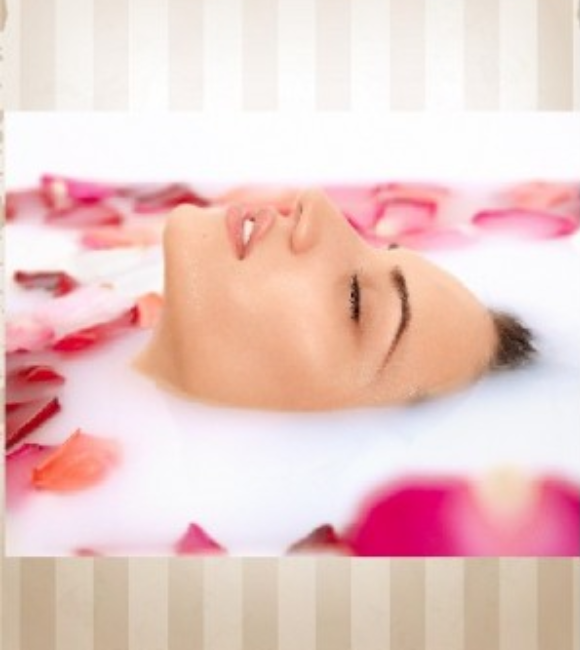
Oncology Massage Cairns
CAUSES OF LYMPHOEDEMA
Primary Lymphoedema
Congenital and familiar, present at birth (Milroys disease) occurs in approx. 2%> of primary lymphoedema.
Lymphoedema proecox, commences in adolescence, accounts for 75% of primary lymphoedema.
Lymphoedema tarda, occurs in age around and over 35years of age, accounts for 20% primary lympoedema.
Family history of the disease occurs in 10 – 2Q7o of coses and in 50% of cases the swelling is unilateral (one-sided).
Swelling is generally due to inadequate lymph drainage or in 10% of coses with a complete absence of lymph channels to the area (Mitroy’s and congenital).
Hypoplasia is most common type as primary l o, and accounts for 757© of clients. These sufferers ore susceptible to even minor infections, which overloads the drainage capacity of the lymph system. This leads to incompetence of the lymph valves and results in lymphoedema.
.Secondary Lvmphoedema:
- After surgery – the most common occurrence is post mastectomy or after breast cancer.
2- offer surgery and removal of axillary or inguinal lymph nodes – malignancies
3- patients with severe burns, massive surgery/scars ie. After MCA.
Pi I or iasis – parasite infection (India, Asia). Can occur years after being infected by insect r infestation and eggs/parasite died. This condition is known to cause blockage of lymph vessels and therefor tymphoedema (more prone in lower 1 % mbs than upper).
Lymphatic tissues hove great power and ability to regenerate, however this is usually due to excessive scar formation from operation trauma and the regeneration can prevent collateral lymph vessel formation.pibrosis also inhibits lymphatic regeneration Combined surgery and radiation treatment can cause fibrosis. This is the most potent “accelerator” of lymphoedemabue to damage of surrounding blood vessels by radiotherapy a lymphatic f ibrosis condition can develop over several years. As a result it leads to migration of f ibro blasts into oedema fluid and subsequent depositing of collagen material in the lymph and interstitial tissues.
Pathology of Oedema and Lymphoedema
Lymphoedema is on abnormal pooling of protein, water and solutes in the interstitial tissues. The protein encourages loss of water from circulating blood by osmosis (Start I ngs Law).
Removal of wastes and cellular debris is very important for healing. If the lymphatics are not working these wastes are not removed (stagnation sets in).
Stagnation of protein- rich lymph fluid can cause secondary fibrosis. It also provides bacteria with their culture medium leading to inflammation and aggravation of oedematous condition.
Pitting oedemas are dynamic and local areas of fibrosis may reduce with elevation or overnight rest.
Swelling results in toss of rOM and can cause pain and hypersensitivity of limb. Lymphoedemc separates the cells and diffusion of cellular gases is interrupted. It can cause hypoxia and later local necrosis.
Prolonged lymphedemas cause collapse of initial lymph vessels, however the initial capillaries can grow in numbers in a high-protein oedema (compensating device). Lymphostasis is a condition of on advanced lymphoedema, congestion is transmitted backwards from a surgery zone irrto the periphery (ie arm, abdomen or leg)In high- protein oedemas the risk of chronic inf lammation and cellulitis increases due to the reduced lymphatic function.
THE LYMPHATIC SYSTEM
Water and dissolved substances, such as oxygen and nutrients, are consistently filtered through capillary walls into spaces between cells, constantly adding to under norma! Circumstances, fluid is also constantly removed so that it docs not accumulate in the tissues. Fluid simply returns to the capillaries and thus the bloodstream, taking with it the end products of cellular metabolism. A second pathway for this fluid is via the lymphatic system.
Lymphatic Capillaries
The lymphatic capillaries or vessels are somehow similar to blood capillaries in that they are made of epithelial cells and allow for the passage of soluble materials. &aps between the cells allow the entrance of proteins and other suspended particles. However, unlike the blood vessels the lymphatic capillaries begin blindly, that is, one end of the capillary lies within a pool of tissue fluid, and the other joins to a larger lymphatic vessel.
Lymphatic Vessel
The lymphatic vessels are thin- walled and delicate, with a beaded appearance, caused by the one- way valves. They are located both superficially and deep. The superficial ones are located just below the skin, and are the ones we attend to and massage with MLD. The deep ones are usually larger in size and are associated and arranged along deep veins and arteries, Lymphatic vessels form a network and at certain points they carry lymph into regional nodes.
Regional Nodes
these nodes are serviced by areas called watersheds, or superficial division lines, for example: nearly all of the lymph fluid collected from the right arm and right thorax area drains into the right axillary nodes; the left arm and thorax drains into the left axillary nodes. Similarly the most of the lymph fluid from the leg and abdomen drains into the respective inguinal nodes. Lymphatic vessels carry lymph fluid away from regional nodes, eventually draining into one of the terminal vessels. These are the right and left thoracic duct, which empty into the venous bloodstream at the junction (terminus) of subclavian veins and Jugular veins.
Right thoracic duct and Thoracic Duct
The right Thoracic duct is a short vessel (125mm) that receives lymph from the The It empties into the right subclavian vein. The rest of the body’s collected lymph fluid drains via the thoracic duct, which is much longer (400mm). The thoracic duct begins as a storage pouch called the cisterna chyli.
Chyli is the name for the milky fluid formed by the fat globules from the intestinal lacteals and lymph. Chyli enters the cistema chyli from the lacteals, adding to the fymph fluid from the nodes below the diaphragm. This mixture is then carried to the thoracic duct and back into the venous bloodstream for elimination.
Movement of Lymph
Lymph fluid is moved by compression of the lymphatic vessels as skeletal muscles contract during movement, itie changes in pressure within the abdominal and thoracic cavities when breathing assist the movement of lymph through the body cavities. Pulsation of closely aligned arteries and veins support the transport of lymph fluid through its vessels so docs the natural pressure within our body.
Lymphoid Tissue
Lymph nodes and a number of organs are made of specialised tissue called lymphoid tissue. The functions of this tissues include the removal of impurities such as cancer celts, pathogenic organisms, dead blood cells through filtration, processing of lymphocytes, some of which produce antibodies to combat infection and foreign “invaders”
Lymph Nodes
Lymph nodes filter lymph fluid once its drained from the interstitial tissuesThey are small rounded masses about the size of a pine nut. Each has a fibrous connective tissue capsule from which a network of reticulin trabeculae extends into the substances of the node. Reticulocytes secrete a network of reticuiin fibres; these are used to hold lymphocytes and macrophages “loosely inside the node”
Lymphoid Organs
lymphoid organs contain aggregations of lymphocytes. They are the Spleen, Thymus, and fansi Is. The spleen is the largest lymphatic organ designed to fitter blood. The interior contains red and white pulp. The red pulp is splenocytes arranged in cords for the destruction of red blood cells. The thymus is involved in the activation of the immune system (sole source of -^lymphocytes) during the first few years of life (after 2-3 yrs the thymus reduces in size until disappearing during puberty). The tonsils include the palatine pharyngaf and Ungual tonsils. They all contain lymph nodules and crypts to trap passing particles and they act as sentry posts for the immune system.
The appendix is sometimes referred to as being part of the lymphoid organ system, acting as a “tonsil” for the lower body.
Oncology Massage Cairns
DISORDERS OF THE LYMPHATIC SYSTEM
Oncology Massage Cairns
Lymphngitis
It is an I nflammation of the lymphatic vessels where red streaks can appear extending along an extremity* It usually has its onset in the region of an infected and neglected injury.
Oncology Massage Cairns
Elaphantitis
It is a great enlargement of the mostly lower extremity (- ies) resulting from blockages of the lymphatic vessel by small worms called f ilariae These tiny I nvade the tissues as -fhey then grow in the lymph channels and thus obstruct the flow of lymph. The swelling of the legs, or in some cases the male scrotum, may be so vast that the sufferer becomes incapacitated.
Lymphadenitis
It is an inflammation of the lymph nodes, where the nodes become enlarged and tender. This condition reflects the body’s attempt to combat an infection. Cervical lymphadenitis occurs during measles, scarlet fever, septic sore throat, diphtheria, and often the common cold.
Lymphadenopathy
This term simply means “disease of the lymph nodes”. Enlarged lymph nodes are a symptom of infectious and/or cancerous conditions.
Oncology Massage Cairns
Hodgkin’s Disease
This is a chronic malignant disorder, most common in young men. The characteristic sign is enlargement of lymph nodes. The nodes in the neck region particularly, and often in the thorax and axilla and inguinal area enlarges. The spleen may become enlarged and dysfunctional.
REVIEW BASICS ABOUT BREAST/SIGNS AND SYMPTOMS
Mammary nodes (glands) overlie the pectoral muscles. Each node contains approximately ZO lobes, which are divided into lobules and alveoli. Ducts extend from the lobes through breast tissue and converge in the nipple. Bach mammary node (gland) has an elaborate lymphatic system which drains primarily into the axilla. This accounts for axillary node enlargement common in malignant breast disease.
Oncology Massage Cairns
TREATMENT of LYMPHOEDEMA by Manual Lymph Drainage and Decongestive physical Therapy
The condition of Lymphoedema can be treated using MLD and DPT .
This treatment is based on very successful programs used in Germany for 30 Years. Whilst the treatment is not a cure for Lymphoedema, it is designed to reduce the swelling and increase mobility, thereby relieving pain and discomfort and improving patient’s wellbeing and skin condition, it also assists the person to lead a more comfortable life and make better choices in daily life.
Oncology Massage Cairns
Treatment
Treatments last for approximately one hour, assuming one limb is affected, and is given on a ‘one on one’ basis with the therapist throughout the program. It is conducted 3-5 days per week over 3 or 4 weeks duration, or shorter if this is cr better option.
Only manual specialized lymphatic massage is provided and no mechanical compression devices are used. Compression bandages are applied daily after each treatment, and at the completion of the program, compression garments are required.
Patients need to follow a daily remedial exercise program during treatment and continue to do exercises afterwards. An intensive follow-up treatment (for approx. 2-3 weeks) is suggested 12-18 months later. Appropriate loose clothing and footwear are needed during the treatment to accommodate the extra bulk of the bandages. It may not be possible to drive your car bandaged (leg Lymphoedema primarily)
The amount of improvement gained from the treatment varies depending on many factors including the degree of active participation by the patient, but recorded treatment success ranges from 25% circumpherence reduction.
A free 30 minute consultation can enable the patient and therapist to meet and to discuss the details of the treatment plan. There are no obligations for this consultation. The client is encouraged to bring along any medical reports or supportive information regarding the condition.
Oncology Massage Cairns







0 Comments